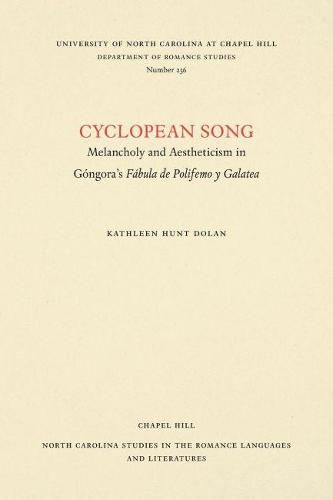Readings Newsletter
Become a Readings Member to make your shopping experience even easier.
Sign in or sign up for free!
You’re not far away from qualifying for FREE standard shipping within Australia
You’ve qualified for FREE standard shipping within Australia
The cart is loading…






While work contrasting Polifemo and Galatea has been done previously, Kathleen Hunt Dolan’s book elevates the level of that discourse and enriches the concept with its deeply researched comparative approach. The book explores Polifemo, tying him first to the pre-Ovidian, underworld-dwelling tradition of the Cyclops, then laying out his expansive semantic field, in terms of time and depth, subjectivism, monstrosity, language, and darkness. Dolan’s book then takes this multi-faceted construct as the counterpoint to Galatea, whose figurative significance encompasses the relationship between space and surface, objectivism, beauty, and light, whiteness, and color. Dolan’s treatment of these tropes within Gongora’s tale is balanced not only with other works from within Gongoran canon and criticism, but also with a wide range of poets, artists, critics, and philosophers from a variety of traditions. This comparative approach affords the reader both a broader and deeper understanding of Gongora’s fabula.
$9.00 standard shipping within Australia
FREE standard shipping within Australia for orders over $100.00
Express & International shipping calculated at checkout
While work contrasting Polifemo and Galatea has been done previously, Kathleen Hunt Dolan’s book elevates the level of that discourse and enriches the concept with its deeply researched comparative approach. The book explores Polifemo, tying him first to the pre-Ovidian, underworld-dwelling tradition of the Cyclops, then laying out his expansive semantic field, in terms of time and depth, subjectivism, monstrosity, language, and darkness. Dolan’s book then takes this multi-faceted construct as the counterpoint to Galatea, whose figurative significance encompasses the relationship between space and surface, objectivism, beauty, and light, whiteness, and color. Dolan’s treatment of these tropes within Gongora’s tale is balanced not only with other works from within Gongoran canon and criticism, but also with a wide range of poets, artists, critics, and philosophers from a variety of traditions. This comparative approach affords the reader both a broader and deeper understanding of Gongora’s fabula.